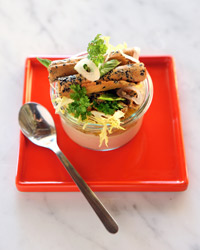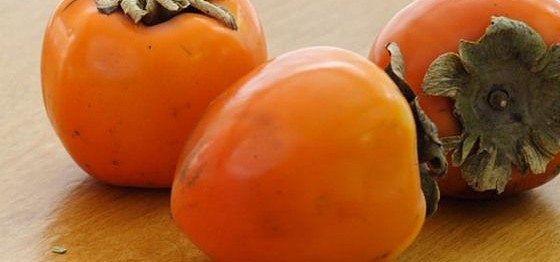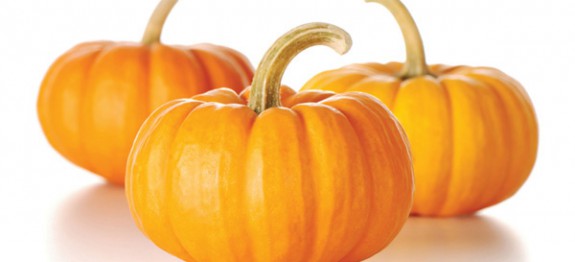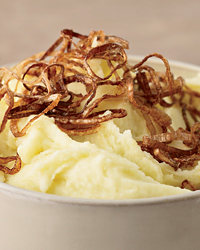For centuries, the Douro Valley was known for one thing: port. Then Dirk Niepoort decided to make table wine, changing the Douro forever. F&W's Ray Isle catches up with the wine revolutionary.

Dirk Niepoort's family has been in the Portuguese wine business for over a century.
The first wine that Dirk Niepoort ever made, back in 1990, was an old-vine blend of local Portuguese varieties, from a vineyard called Quinta do Carril in Portugal's Douro Valley. He called it Robustus. The name was apt: The wine was, as he recalls, "a monster." It was massive and powerfully tannic, almost overbearing in its intensity—but still, he felt, quite good. At the time, almost no one else in the Douro was making table wines. Port ruled the region, as it had since the 1700s. The Niepoort family business, which Dirk's father, Rolf, directed, was port.
Dirk made four barrels of Robustus, then headed off to Australia to work the harvest in the Barossa and extend his knowledge of winemaking. When he returned to Portugal several months later, he stopped by the family cellars in Oporto to taste how his wine was progressing. But the wine wasn't there. "My father," Niepoort recalls, "had given away three of the four barrels I made to the workers."
When Niepoort told me this, we were sitting at the table in his backyard, midway through one of the frequent dinner parties he likes to give. He's a talented cook, and he seems to enjoy nothing more than bringing together a crowd of friends, employees, other winemakers, passing journalists and anyone else, then plying them with terrific food and wine (the cellar under his house is jammed to the ceiling with bottles). It's a generosity of spirit that's appealingly Rabelaisian and very hard to dislike.
I said, "Your father gave away the wine you'd made? Why?"
"He said it was shit," Niepoort replied.
There are a few things to know about Dirk Niepoort beyond his refusal to mince words (apparently a trait that runs in the family). He is 49. The Niepoort family, which is Dutch, has been in the port business since 1842, when they moved to Portugal from Holland. Dirk Niepoort is the fifth generation to work for the family company, and since 1997, he has been in charge.
Prior to his involvement, the Niepoorts ran what was purely a port trading company. They purchased finished wines from growers in the Douro, then blended, aged and bottled them in Oporto, selling the end result under the Niepoort name (not an unusual practice at the time). Neither Dirk Niepoort's father nor his grandfather, in fact, ever spent a single night up in the Douro wine region; they lived and worked in Oporto. And while the company's ports had a good reputation, it was a limited one. As Niepoort says, "We were a good house, but we were a secret. We were well-known in Belgium, but that's it."
Though it may seem so in retrospect, Niepoort wasn't trying to make a statement when, at the age of 26, he produced that first table wine. "My general manager paints me as a visionary, which is bullshit," he says. "I like wine! That's why I wanted to make it." Today wine, not port, makes up 60 percent of the family business, and the company that was "well-known in Belgium" is the third-largest wine producer in the Douro. On top of that, visionary or not, Dirk Niepoort is probably the one person most responsible for changing the world's opinion of exactly how great Portuguese wine can be.
Up until relatively recently, Portugal had a reputation for making rough, inexpensive reds, plus a lot of nondescript, tangy Vinho Verde and an ocean of Mateus, a sweet, fizzy rosé sold in a flask-like bottle. As Beatriz Machado, the wine director for Oporto's new Yeatman Hotel (and a trained winemaker herself), says, "We missed the train of quality in Portugal. But there's been a big shift over the past 10 or 12 years." A lot of that shift can be attributed to the influence, either directly or indirectly, of Dirk Niepoort.
Niepoort is curious, ambitious, talented and—perhaps most important—extremely stubborn. Despite his father's vehement dislike of Robustus, a feeling shared by most of the established local winemakers for whom Niepoort also poured the wine, he kept going. "When I made Robustus," he recalls, "I said, my first wine is going to be a monster. But in 20 years I'm going to be making fine and elegant wines. And now, 20 years later, I am."
These days Niepoort makes 11 Douro wines—red, white and rosé—plus frequent experimental ones. Then there are (currently) nine fascinating wines that he produces jointly with other winemakers, some in Portugal and some not. Referred to as the "Niepoort Projectos," these collaborations usually head into the unexpected. What about making a white wine from Jerez, aged under a veil of yeast like a fino sherry, but not fortified? Why not make a bi-regional Dão-Douro blend? On top of that, there's the family's port business, which he has also expanded, and a winery that he co-founded in Austria, Muhr-van der Niepoort. Late last year, Niepoort purchased an estate in Portugal's Bairrada region, Quinta de Baixo; he'll release the first wines he's made there this month. In fact, Niepoort's unwillingness to stop contemplating new projects pretty much ensures that by the time this article appears in print, there will be something new to add to that list.
While there are plenty of winemakers in the world who produce scores of different wines, what makes Niepoort distinct is his approach to wine as a whole, and his ability to communicate that sensibility. From the beginning, he has seen wine—whether in the Douro or in the world at large—in terms of what might be possible, rather than what has already succeeded. This doesn't mean his technical approach to winemaking is radically experimental, though; if anything, it's the opposite.
"I use old-fashioned thinking and traditions, and modern possibilities," he says. "It's very simple winemaking. I don't use industrial yeasts, I don't use any chemicals, except for sulfur—it's truly non-interventional winemaking."
In a sense, Niepoort tends to see what might be rather than what is. A group of old, high-altitude Douro vineyards that produce obscure white varieties like Rabigato and Côdega do Larinho—which, for decades, had been destined for anonymous bottles of white port—could instead be a source for an extraordinarily complex, minerally white wine: Niepoort's Redoma Branco. Or a dry red from ancient Douro vineyards—made by foot-treading in old stone lagares, the way vintage port is traditionally made—could include the stems, a technique borrowed from Burgundy. The result is Charme, a gorgeously aromatic wine that manages to transform the innate power of a Douro red into Burgundian finesse. As Beatriz Machado says, Charme "is a wine that really has the sensibility of a great Pinot Noir, but using Portuguese grapes. No one had thought to do that before. It was like dropping a bomb on people's ideas here."
But as influential as all these Douro wines have been, Niepoort's projects with other winemakers around the world are the ones that seem to point directly toward the future. The exchange of ideas in the wine world is far more fluid than it used to be (just as it is in practically every other business), but winemakers on the whole remain somewhat parochial: Those in Rioja usually drink Rioja; those in Bordeaux, Bordeaux; those in California, in large measure, drink wines from California. There have been "flying winemakers," a term coined for consultants who work in other countries than their own, but for the most part, their role has been to show up for a couple of days every few months, offer advice on blending or winemaking strategies and then disappear, leaving behind a substantial bill for their services and the promise of higher critical scores. Many would argue that they promote a kind of polished, international homogeneity more than anything else.
Niepoort's approach is more of a natural give and take, and it represents a new style of cross-border wine collaboration that is only just beginning to appear. For instance, he and acclaimed Spanish winemaker Raúl Pérez spent several years making two wines together, one in Ribeira Sacra and one in the Douro. They produced only a thousand or so bottles each vintage, but as Niepoort says, "The point is that Raúl learned a lot from us, and we learned a lot from him. So what if it's only a thousand bottles? I'd give them away—the exchange of ideas is worth it."
He adds, "It's not about money, this exchange. It's about culture, respect, sharing. With Raúl, his style of winemaking, I learned that maybe I'm too nervous about some things—that I should relinquish a little control. I remember he said to me, 'Dirk—personality. It's not whether the wine is better or worse. It's whether a wine has personality.'?"
That's not to say that joint ventures are something new. In Napa, Opus One—a collaboration between Robert Mondavi and the Baron de Rothschild—released its first vintage in 1984, and there have been plenty of others since. But the impetus with those projects has always been to create a signature wine, or a brand: camaraderie aimed toward profit. With Niepoort's collaborative ventures, it's more the journey itself that's the purpose. Already, there are some similar efforts floating around. One example is Détente, a half-Californian, half–French Rhône-style blend that's a joint effort between Santa Barbara County's Joey Tensley and Cécile Dusserre of the southern Rhône's Domaine de Montvac. Another is Chimère, a joint project between Manfred Krankl of Sine Qua Non and the Châteauneuf-du-Pape producers Pascal and Vincent Maurel. In a way, these ventures are more reminiscent of the shared experimentation common in the craft-beer world than anything found in wine.
Niepoort's influence isn't limited to these joint projects, though. Young winemakers from Portugal and abroad have drawn inspiration from working harvests with him. As Mac Forbes, who makes some of Australia's most impressive Pinot Noirs and worked with Niepoort in Portugal in 2004, says, "The thing I think Dirk offers for people is that he makes them stop and reevaluate everything, makes them rethink all their preconceptions."
At that dinner in Portugal, Niepoort said simply, "I make what I want. Then I try to explain it to people. That's what I do."
The food was long gone, but wine was still being poured. Toward the end of the evening, Niepoort emerged from his house carrying a mystery wine in a decanter. We all tasted it. It was obviously old, but still alive, full of dark, velvety fruit. To me, it recalled a chimerical blend of a Châteauneuf-du-Pape from a great producer (Henri Bonneau came to mind) and the exotic and sometimes slightly weird wines of Lebanon's Chateau Musar. The faint whiff of volatile acidity in the aroma—oddly evocative, rather than off-putting—put me in mind of something Jacques Lardière, the extraordinary former winemaker for Louis Jadot, once said: "A wine's magic doesn't derive from its technical perfection."
The wine turned out to be one of the remaining bottles from that single barrel of Robustus. It did, in fact, seem somewhat magical that the wine was there, and I said something to the effect of how crazy it was that his father could have thought something this good was a disaster.
Niepoort said thoughtfully, "One day a few years ago, I had a birthday party, and I opened and decanted a magnum of 1991 Redoma." The '91 Redoma was the first wine he released commercially, since there was not enough Robustus left to sell. He went on: "Some time went by, and I looked around, and I couldn't find the decanter. Where was the wine? It turned out my father had drunk most of it. So, I thought, Well. My wines can't be that bad."
The Niepoort family founds a port company in Oporto. They buy and blend wine rather than make it.
The Douro Valley becomes an official appellation for table wine.
Dirk Niepoort joins the family business, working with his father, Rolf. At Dirk's urging, the company begins buying vineyards in the Douro Valley—Quinta de Nápoles and Quinta do Carril.
Despite resistance from his father, Niepoort starts making table wine rather than port; the first release is the 1991 Redoma Tinto. Eventually, dry wines will account for more than half of their business.
Niepoort builds a slate-walled, state of-the-art winery at Quinta de Nápoles, designed by famed Austrian architect Andreas Burghardt.
After the departure of winemaker Luis Seabra, Niepoort is spending more time in his own cellars—"I need to hit the reset button there," he says.
This bright, juicy red blend of Douro varieties, such as Touriga Nacional and Touriga Franca, is Niepoort's most affordable wine.
Niepoort's flagship white could be an award-winner for "best collection of really obscure white grapes." It's an aromatic blend of Rabigato, Côdega do Larinho, Arinto, Gouveio, Boal and Viosinho—and those are just the significant ones.
This unusual Spanish wine—a zesty white that's also almondy and saline, like a fino sherry—is a joint effort between Niepoort and Jesús Barquín of the groundbreaking sherry producer Equipo Navazos.
Redoma is the wine that proved Niepoort right about dry wines from the Douro. The acclaimed first vintage, 1991, is still drinking gorgeously today; the latest, '09, which tastes like a handful of wild strawberries, should live just as long.
With all the buzz about the table wines, it's easy to forget that Niepoort also makes excellent ports—especially in a truly great vintage like 2011.

View the original article here
 F&W's favorite Caribbean hotels include La Samanna in St. Martin. Photo courtesy Orient Express Hotels
F&W's favorite Caribbean hotels include La Samanna in St. Martin. Photo courtesy Orient Express Hotels 
\ABS\Auto Blog Samurai\data\World Best Food\Gourmet food\logo.png)

\ABS\Auto Blog Samurai\data\World Best Food\Gourmet food\related_articles.png)
\ABS\Auto Blog Samurai\data\World Best Food\Gourmet food\thedish_110x120.jpg) The DishReceive delicious recipes and smart wine advice 4x per week in this e-newsletter.Sign UpThe Wine ListWeekly pairing plus best bottles to buy.F&W DailyOne sensational dish served fresh every day.American Express Publishing ("AEP") may use your email address to send you account updates and offers that may interest you. To learn more about the ways we may use your email address and about your privacy choices, read the AEP
The DishReceive delicious recipes and smart wine advice 4x per week in this e-newsletter.Sign UpThe Wine ListWeekly pairing plus best bottles to buy.F&W DailyOne sensational dish served fresh every day.American Express Publishing ("AEP") may use your email address to send you account updates and offers that may interest you. To learn more about the ways we may use your email address and about your privacy choices, read the AEP\ABS\Auto Blog Samurai\data\World Best Food\Gourmet food\original.jpg)

\ABS\Auto Blog Samurai\data\World Best Food\Gourmet food\PinExt.png)
\ABS\Auto Blog Samurai\data\World Best Food\Gourmet food\white-25.png)

 Photo courtesy of Melanie Dunea
Photo courtesy of Melanie Dunea


 Mashed potatoes with crispy shallots
Mashed potatoes with crispy shallots